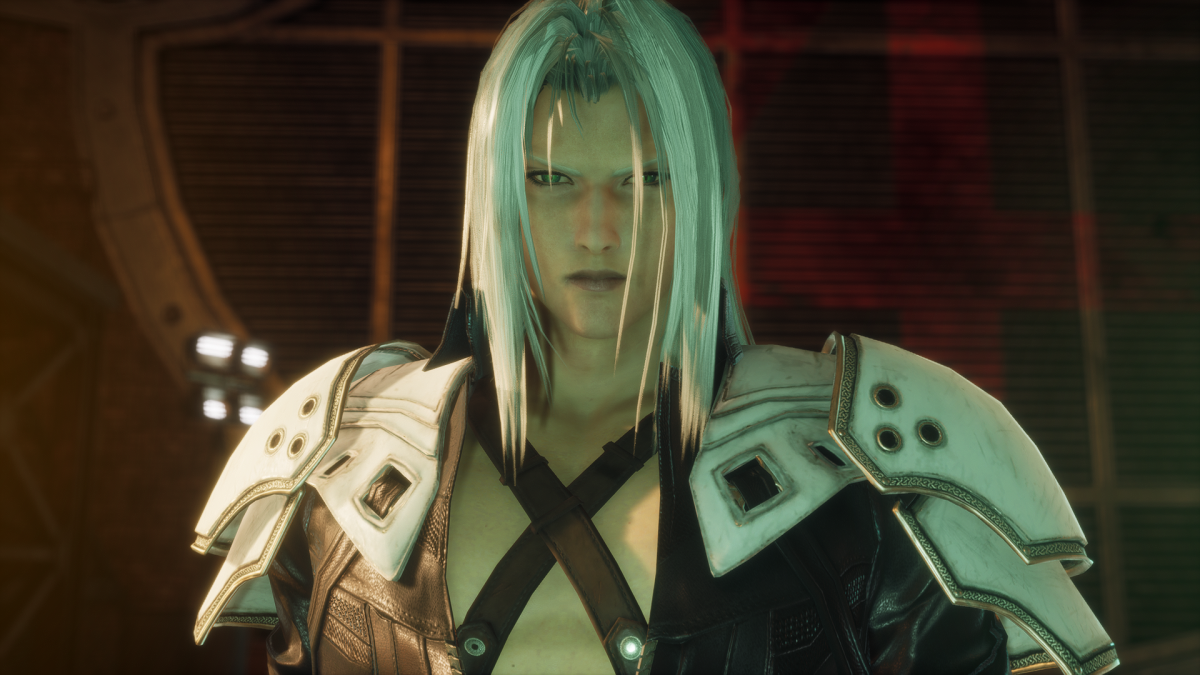Crisis Core: Final Fantasy VII Reunion Recap
In smaller hands, the wave of nostalgia unleashed at the heart of Final Fantasy 7 Prequel Crisis only leads to another wearisome memory thing: the game.
Look, there is Midgar. again. There is Shinra’s headquarters. again. Remember Sephiroth? Good, because he’s back, this time with his friend Bootleg Sephiroth and Cloud v0.01.
But Crisis Core isn’t in the hands of the few, nor is it interested in ostensible refurbishments. Here’s the story of Zack Fair, first seen in some of Final Fantasy VII’s flashbacks, and the value of RPG friends and enemies that were either created specifically for Crisis Core, as they are here for the first time. A major outing, either from a whole new perspective. These new characters bring a fresh story and perspective to the game’s popular setting, sometimes clarifying an old and confusing plot thread, and sometimes adding more intrigue to events that for the first time seemed clear and well explained.
Zack is an easy character to like. He started Crisis Core with a sense of excitement, happily stomping around the world of Final Fantasy VII in his company-issued boots, cleaning up “twisted” (company parlance for “anyone against Shinra”) and eager to see The bravest soldier among them, Sephiroth. This ignorant positivity matures subtly over the course of the game, and his zest for life doesn’t wane but is instead reframed as a personal defiance of an increasingly harsh reality. The re-recorded and vastly expanded voice acting (and slightly tweaked English translation) brings about the shift, and every theme, from serious lines about personal legacy to one-off jokes, conveys emotion convincingly, and Final Fantasy VII The voice actors of “Remake” are back to fit.
Crisis Core’s origins as a PSP game came with an unexpected benefit — simplicity. The original didn’t have enough disk space or battery power to waste time doing anything but get straight to the point, and thanks to that, Reunion’s main story continues to move forward at a brisk pace, with plenty of auto and manual save points btw Many optional side stories are included in their own easy-to-access menus, always at the ready.
While the 3D landscapes cover everything from steampunk slums filled with detailed garbage to verdant villages with fruit hanging lazily from twisted branches, only the general look and layout comes from the 15-year-old game Reunion is based on. Everything else is either brand new or stolen from existing models found in the Final Fantasy 7 Remake, perhaps with minor changes.
1 of 5 images
(Image credit: Square Enix) (Image credit: Square Enix) (Image credit: Square Enix) (Image credit: Square Enix) (Image credit: Square Enix)
Crisis Core isn’t as polished as Remake, though.Some animations are a bit too simplistic or repetitive to watch in HD – an unnamed NPC opens its puppet-like mouth while speaking, Zack performs precise It’s the same gesture again — the apparently compact area betrays the game’s portable roots. But with the game being relatively cost-sensitive in places, it’s clear that Square has a very different idea of what a “budget” remake should look like than most, and overall Reunion looks as modern as any other top-tier RPG.
Unfortunately, there are some hard limits to how far PC gamers can push these graphics, as the available settings are on the fundamental side. There are some standard window/resolution/vsync/FPS options to choose from, with low/medium/high options for shadows, textures and AA right out of the box. But the camera and keybinding settings are almost comically detailed, allowing users to tweak everything from basic controls to how the camera behaves when encountering inclined surfaces. Overall performance is pleasantly calm, with no stuttering or ugly pop-ups — as long as it’s running, Crisis Core works the way it’s supposed to.
Crisis Core’s old combat system was almost completely rebuilt, and it’s definitely getting better. Revamped core commands — attack, dodge, and guard — and a smart lock-on system give Zack the fluidity of an action hero, while a host of subtle details add layers of strategic nuance. Whereas many RPG combat systems rely entirely on the power of mathematics to determine whether an attack hits or misses the target, Crisis Core focuses on physical connection and positioning in the moment: only when a sword arm or spell meets the creepy Shinra-funded, It takes harm to cause injury aversion. I am the key to Zack’s survival, not the stat sheet: my own ability to judge and respond to incoming attacks is far more important than any boosted stats or equipment.
Crisis Core Reunion Escapes The Long Shadow Of Final Fantasy 7 With Ease
It’s a shift in focus, making Zac’s victory my own, with every successful dodge credited to a personal skill, and every speedrun fight a concrete demonstration of my own abilities.
Here, even magic is more than just sparkle damage. Icicles fall from above and have a narrow area of effect, making it difficult to use against moving targets. Mighty Fireball is a multi-hit spread. Gravity Orbs take a while to connect with enemies, but if they do, they may drop their health. Every spell has some unique quirks to take into account, which prevents spellcasting from becoming a situation of spamming the most efficient numerical options over and over again.
While this is happening, running in the corner of the screen is DMW (Digital Thought Wave), Crisis Core’s casino-style slot machine system. These unpredictable bonuses make combat slightly confusing: Zac can briefly become a spellcaster who summons a dragon or an invincible warrior, encouraging me to change my combat strategy to make the most of whatever is currently active. Since these effects are always beneficial, constantly changing my tactics feels like a welcome opportunity to cause trouble differently for a short period of time without blocking any personal attacks I can think of before the scroll stops Plan to rotate.
1 of 4 images
(Image credit: Square Enix) (Image credit: Square Enix) (Image credit: Square Enix) (Image credit: Square Enix)
DMW is also directly tied to the story. Sometimes the reels are replaced by flashes of past events, or the action may pause entirely for a few seconds (skippable), which may reveal new insights. This distraction mimics Zack’s own cranky thoughts, and I found the stark contrast between effects-laden combat and cherished memories unexpectedly emotional because it gave our unrelentingly optimistic hero unseen depth and tenderness. time, otherwise he would not have it.
Crisis Core Reunion is a riveting action RPG with no patience for bravado, and one that easily escapes Final Fantasy VII’s long shadow. As someone who still remembers playing Crisis Core on the PSP, I find the vastly upgraded graphics and redesigned combat system here to be well worth replaying, and Zac’s decisiveness in a world designed to keep him underfoot ( Ultimately futile) The positivity still managed to tug at my heartstrings, even though I knew exactly how his story would unfold before I even installed the game.
Between Pixel Remasters, Tactics Ogre, and now this game, it’s clear that Square-Enix’s old catalog is in safe hands.
Check more articles in our categories Gaming & News et Anime.
Thanks for visiting we hope our article Crisis Core: Final Fantasy VII Reunion Recap
, we invite you to share the article on Facebook, twitter and e-mail with the hashtags ☑️ #Crisis #Core #Final #Fantasy #VII #Reunion #Recap ☑️!














Leave a Review